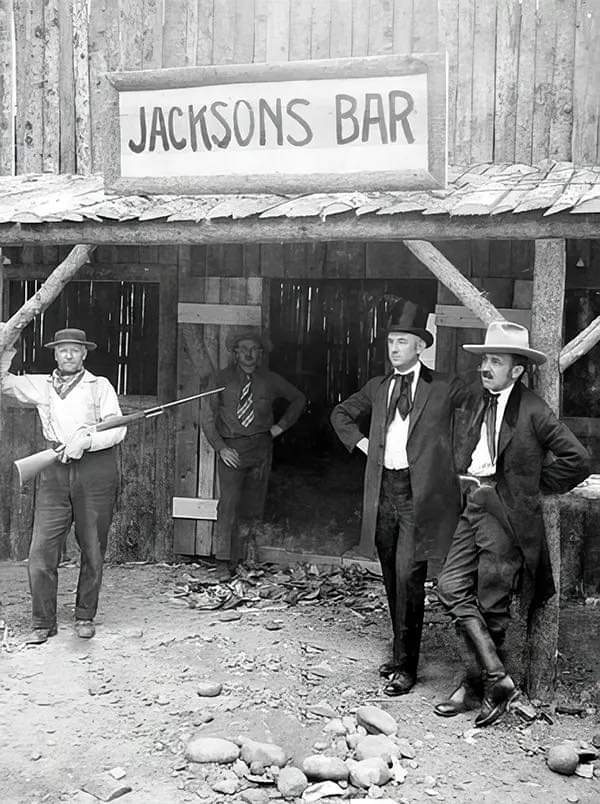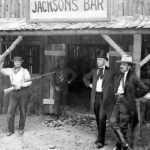Dressed in the typical attire of the time, with a worn-out vest, sturdy boots, and a broad-brimmed hat, he exuded the toughness and resilience required to operate in a harsh and often lawless environment. The rifle, held with confidence, was not just a symbol of personal protection but also a tool necessary for survival in the wild, untamed landscape of the West.

The backdrop likely featured the modest, wooden structures of a frontier town, possibly with the bar in view behind him, representing the social hub of the community. Bars and saloons were central to life in the American West, serving as gathering places where people came to socialize, share news, and unwind. The owner, by posing with the rifle, conveyed a sense of authority and preparedness, ready to defend his establishment and his livelihood from the challenges of the time, whether they be from rough clientele or the unpredictable dangers of the region.
This photograph offers a rare glimpse into the life of a frontier entrepreneur, where business ownership often meant navigating a mix of commerce and frontier justice. It symbolizes the era’s blending of tough survival instincts with the emerging spirit of entrepreneurship, where individuals like this bar owner carved out lives and communities in the often unforgiving wilderness of the American West. His posture, with rifle in hand, reflects both the rugged individualism of the time and the heavy responsibilities of running a business in a challenging and sometimes volatile environment.











Leave a Reply